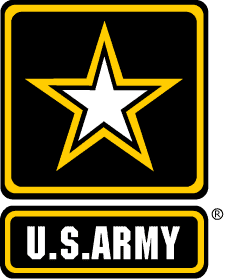U.S. Army’s LEAP Winners Score Nearly $1 Billion in LSS Financial Benefits
Ten units and project teams of the U.S. Army were recently recognized as LEAP winners for the success of Lean Six Sigma projects during 2013, all of which gained the Army nearly $1 billion in financial benefits.
 LEAP – Lean Six Sigma Excellence Awards Program – recognizes outstanding efforts of streamlining business processes. It underscores the emphasis the Army has placed on the methodology.
LEAP – Lean Six Sigma Excellence Awards Program – recognizes outstanding efforts of streamlining business processes. It underscores the emphasis the Army has placed on the methodology.
Since then, the Army has realized a return on investment of 700 to one, and has trained over 11,000 Green Belt, Black Belt and Master Black Belt practitioners to ensure Lean Six Sigma practices are absorbed in its operational fabric.
Former Under Secretary of the Army Joseph W. Westphal, Ph.D., has noted the importance of the manufacturing and business process improvement programs – and their leaders – to the Army.
“Their leadership is important in ensuring our business systems continue to improve, but also in driving efficiency and eliminating redundancy,” Westphal said. “And in these days, as you know, we are all about looking at eliminating redundancy and creating greater efficiency.”
This year’s LEAP winners include:
- Assistant Secretary of the Army (Manpower and Reserve Affairs)/Deputy Chief of Staff, G-1, Headquarters, Department of the Army. Twenty four Lean Six Sigma projects were completed under a Continuous Process Improvement program, creating $42.4 million in financial benefits – or 3.3% of the organization’s budget.
- Army Materiel Command, with 717 projects completed for $87.7 million in financial benefits – 4.6% of its budget.
- The Joint Munitions Command, AMC. This Command’s projects provided $40.8 million in financial benefits, or 5.5% of its budget.
- Assistant Secretary of the Army (Manpower and Reserve Affairs)/Deputy Chief of Staff, G-1, Headquarters, Department of the Army. A project focusing on electronic Physical Evaluation Board processing reduced the process lead time by 30%, creating financial benefits through 2020 of $28.2 million.
- The Program Executive Office, Combat and Combat Service Support. An initiative for the Joint Combat Support Systems Multi-Generation Project addressed soldier effectiveness and efficiency as well as life-cycle costs. It netted $253 million in cost avoidance and $139 million in cost savings.
- Tobyhanna Army Depot, CECOM, LCMC, AMC. A program to improve the materiel induction Process Lead Time (PLT) led to a reduction in the average PLT from 2.7 days to 0.84 days. It netted monthly savings of 229 man-hours and a cost avoidance through 2015 of $0.4 million.
- Irwin Army Community Hospital, Ft Riley, Kansas, MEDCOM improved the Integrated Disability Evaluation System (IDES). This effort reduced the time to process determinations, increased predictability for soldiers, and improved medical readiness. Estimated financial benefits through 2017 are $226 million.
- The 21st Theater Sustainment Command developed a mechanism to improve the Basic Allowance for Subsistence recoupment process, revolving around how reports of meals issued are submitted. It should recoup an estimated $2.5 million through 2018.
- The Aberdeen Test Center (ATC), ATEC examined a specific group of ATC test support personnel to identify more efficient use of their time and at a decreased cost to the organization. Savings in terms of cost avoidance were tallied at $10.8 million through 2018.
- 21th Theater Sustainment Command, USAREUR. Over 300 Soldiers separate monthly from active duty in Germany. Often, final payments were not made within the standard of three days of date of separation. This project improved the timeliness rate of final payment to 80%.



